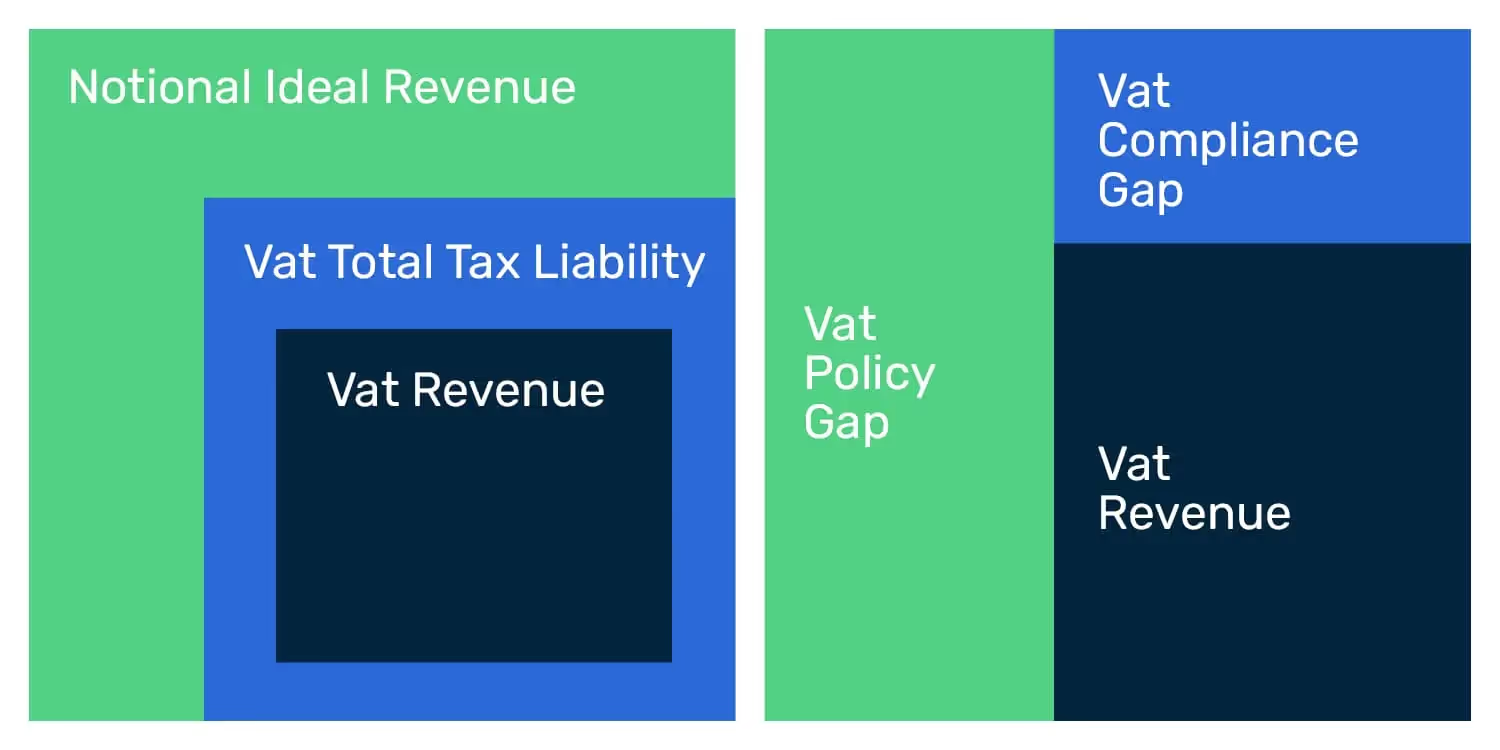The European Commission (EC) recently released a report on the VAT Gap of the EU member states. Importantly, there is more than one way to think about the VAT Gap – the VAT Compliance Gap and the VAT Policy Gap. Here are two quick definitions:
VAT Compliance Gap
The VAT Compliance Gap is a measure of overall non-compliance in a country. It’s the difference between the tax revenue that would be collected under full compliance and the actual revenue collected. The EC report deals primarily with the VAT Compliance Gap.
VAT Policy Gap
The VAT Policy Gap is a measure of the impact that exemptions and reduced rates have on revenue losses. It estimates the potential VAT that could be collected in an ideal system where all end-consumption is taxed uniformly at the current standard rate (the notional ideal revenue).

Source: European Commission, Directorate-General for Taxation and Customs Union, Poniatowski, G., Bonch-Osmolovskiy, M., Śmietanka, A., et al., VAT gap in the EU : report 2022, Publications Office of the European Union, 2022.
While the VAT Compliance Gap (hereinafter the “VAT Gap”) calculation appears straightforward – it’s simply the VAT due compared to actual VAT revenues – it reveals quite a bit about the state of indirect taxation in Europe. It also has numerous implications. Let’s discuss the VAT Gap and explore why it matters.
The VAT Gap in the European Union
Value Added Tax (VAT), is an important source of revenue for many countries in the European Union. Unfortunately, it is also one of the most vulnerable revenue streams for tax evasion and fraud. The VAT Gap, which is the difference between the total amount of VAT due and the amount actually collected, is an indicator of this problem.
The latest report by the European Commission on the VAT Gap in 2022 shows that the overall EU VAT Gap decreased by more than €31 billion to €93 billion in 2020 (EU VAT revenue decreased by 6.9%, as well). For comparison, in 2019, the EU-wide VAT Gap amounted to €134 billion.
Overall, the average EU VAT Gap is at 10%. On the country level, Romania had the highest VAT compliance gap in 2020 with 35.7% of VAT revenues going missing, followed by Malta (24.1%) and Italy (20.8%). The smallest gaps were observed in Finland (1.3%), Estonia (1.8%), and Sweden (2.0%).
You can find more detail on other EU countries in this map:

Impact of the COVID-19 pandemic on VAT revenue and the VAT Gap
The COVID-19 pandemic had a significant impact on the VAT Gap in 2020. Many countries implemented measures to support businesses and individuals, such as tax exemptions and reduced rates. In 2020, EU-wide VAT revenue went down by approximately EUR 69 billion (6.9%), while the VAT Gap also decreased significantly. As you might imagine, the largest VAT Gap declines were found in Member States that implemented the strongest support measures.
How ViDA aims to change the VAT Gap
At the end of 2022, the European Commission put forward new measures in a key report entitled VAT in the Digital Age (ViDA), with recommendations that aim to both improve VAT collection and reduce the VAT Gap. (For a deep dive on what you need to know about ViDA, read our in-depth takeaways here.)
ViDA aims to modernize VAT reporting obligations and facilitate e-invoicing, update the VAT rules for the platform economy and move towards a single VAT registration in the EU. While the implementation of these proposed changes will only be expected between 2023-2028, businesses should be prepared to comply with the new Digital Reporting Requirements (DRRs), as they’ll likely require significant investments in IT. But with a proactive approach and proper strategy – along with partners like Fonoa – preparing to be compliant doesn’t have to be a struggle.
















